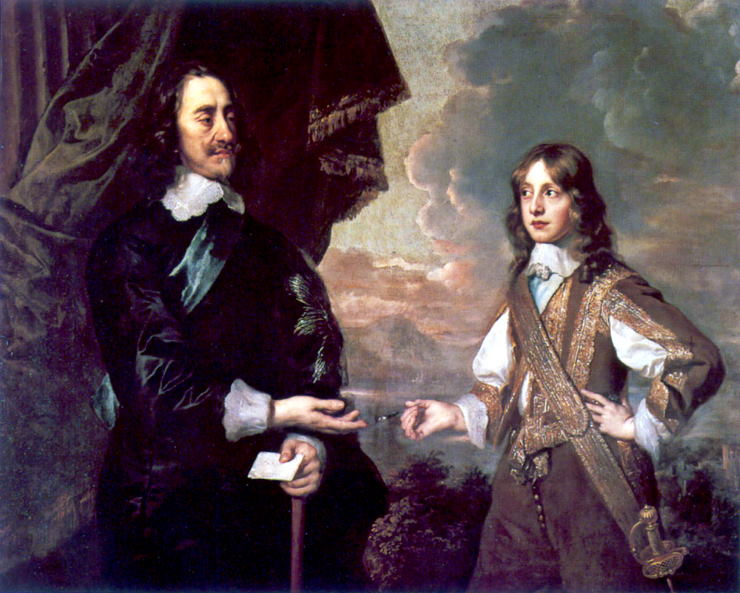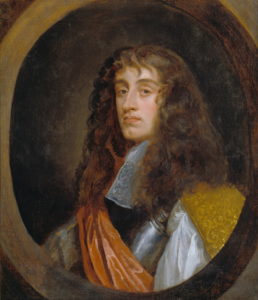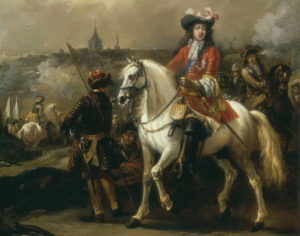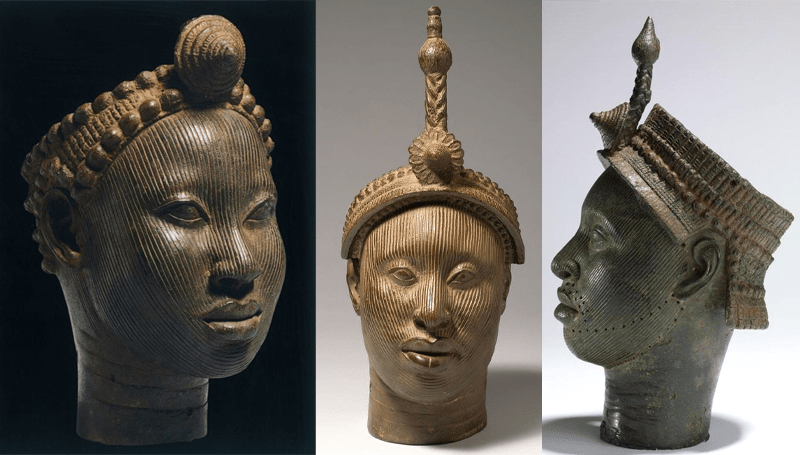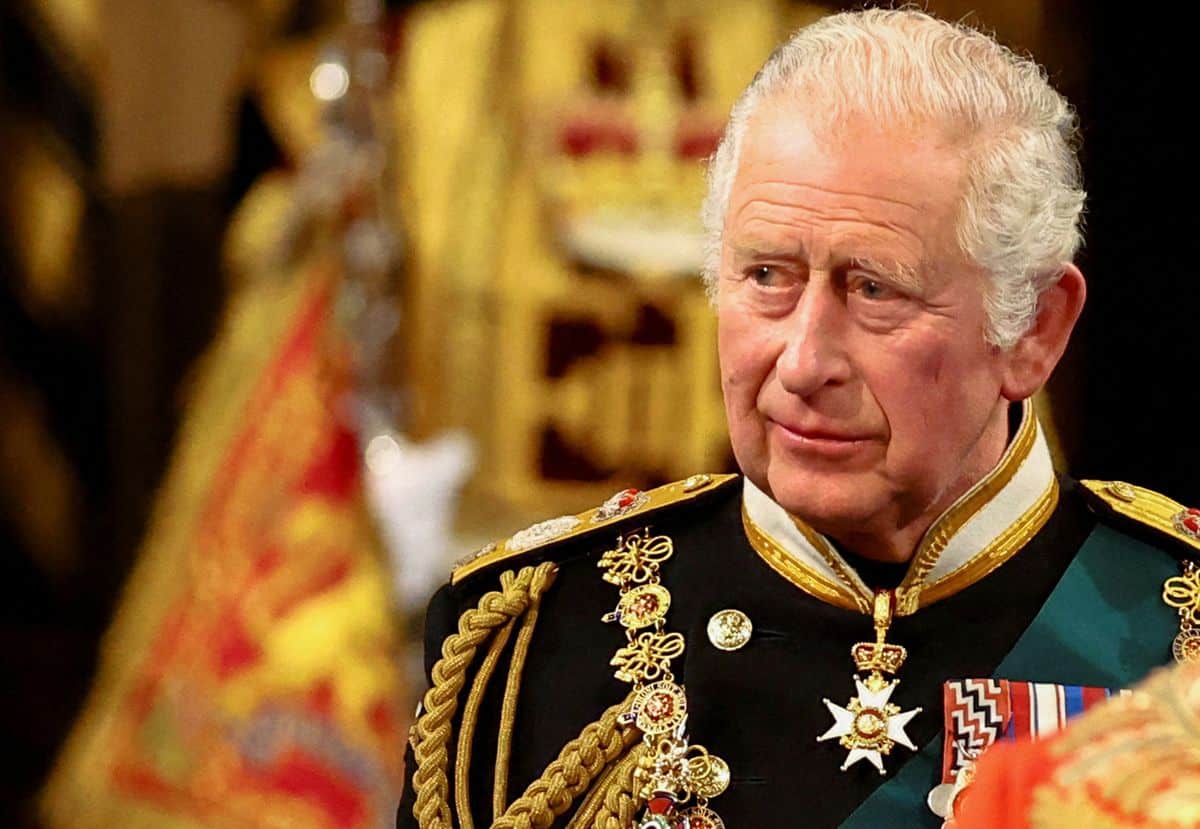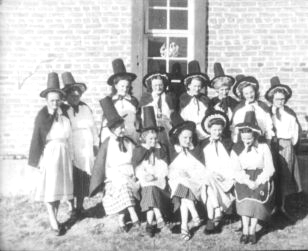King James II’s reign was very brief. The last Catholic monarch, Unable to overcome the continued source of religious tension and constitutional crisis in the country, his short three years as king would culminate in the Glorious Revolution.
He was born in October 1633, the second surviving son of Charles I and younger brother to Charles II. Upon his birth, he was given the title of the Duke of York and much like his brother grew up in the context of the English Civil War resulting in his father’s execution.
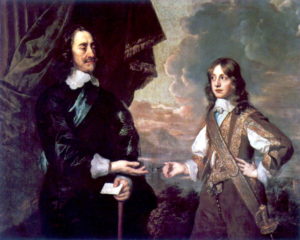
He had during this time, accompanied his father in battle at Edgehill and then remained in Oxford when the city was subsequently besieged, resulting in the Duke of York being held within St James’s Palace. His capture was not for long as, in disguise, he managed to flee the palace and reach the safety of the continent, where, like his brother the future Charles II, they found themselves in exile whilst the nation dabbled in a republican experiment.
Cromwell seized power in England as James began serving in the French army and was appointed Lieutenant-General for his valiant participation in battle. Sadly, his success in the army was not to last when his brother turned to Spain for support in reclaiming his throne. Spain was an enemy of France and thus James found himself expelled from the French army. He would subsequently join the Spanish forces forcing him to fight against his former colleagues and comrades.
Finally, international relations altered, and in 1659 the French and Spanish made peace. Meanwhile, James was seriously considering the offer of admiral of the Spanish navy however he declined and ultimately, within a year, the political situation back in England had changed dramatically allowing James and his brother to return to England victorious.
His brother, Charles II was thus restored to the throne and crowned king, bringing an end to the republican failure.
Meanwhile, James as the younger brother was heir presumptive and served in a variety of roles in the military including as Lord High Admiral and later would command the Royal Navy during the Second Anglo-Dutch War. He remained in this role during the third war with the Netherlands in which a great amount of conflict occurred off the coast of Africa where he also held the position of Governor of the Royal Adventures into Africa.
At a time when English interests were expanding across several continents, his brother Charles II gave him significant American territory, and perhaps most notably, after the seizure of Dutch territory, he renamed the port, New York, after James.
Whilst James had an eventful life in his military career, he had an equally momentous private life as he caused controversy by marrying the commoner Anne Hyde, daughter of Charles’s minister, Edward Hyde.
Sadly, after losing six children in infancy, only two of their daughters survived, Mary and Anne. In 1671 James was faced with more heartache when his loyal wife Anne also died.
Meanwhile, James had become increasingly drawn to the Catholic faith having been exposed to many elements whilst in France. His conversion took place in secrecy, however, in the context of growing anti-Catholic resentment and fear-mongering. The introduction of the Test Act in 1673 forced all military officers to take an oath denouncing Catholicism. For James, this was simply too much to ask and thus he gave up his position as Lord High Admiral and his Catholicism was no longer a secret.
As a result of his brother’s religious leanings, Charles found himself navigating dangerous territories, later advocating the marriage of James’s daughter Mary to the Protestant William of Orange as a means of displaying his daughter’s Protestant ideals in the face of her father’s Catholic credentials.
Nevertheless, Charles allowed his brother’s second marriage to Mary of Modena, a young Italian princess. This did nothing to allay the fears of both parliaments and the general public who saw the lack of children produced by Charles II as a potential threat leading to a Catholic king.
The country soon gave way to anti-Catholic hysteria and thus, the exclusion crisis followed in a blatant attempt to overhaul the principles of hereditary lines of succession in the monarchy.
Unfortunately for those who feared governance by a Catholic king, the death of Charles II from apoplexy in 1685 with no legitimate children to inherit, resulted in James succeeding to the throne. For many, their worst fears had been realized.
James was next in line, there was little that could be contested and so at Westminster Abbey on 23rd April 1685, he proclaimed King James II.
In his first tentative steps as king, all seemed well as the new parliament called the “Loyal Parliament” appeared favorable, granting James a considerable income. He appeared keen to work hard and reconcile the differences exposed by the exclusion crisis however the divisions were already deep-rooted and within no time at all James had to face off a number of rebellions.
The Monmouth rebellion, led by his own nephew, the Duke of Monmouth began with his proclamation as king in Lyme Regis, Dorset. His attack against the king was launched in the dead of night but it was not enough to defeat James’s men at the Battle of Sedgemoor as Monmouth’s men appeared ill-prepared. For his role in this coup, Monmouth was executed at the Tower of London whilst the rebel recruits were condemned by the trial known as the Bloody Assizes. The result was a grizzly fate for the rebels who were found guilty of treason and sentenced to death or servitude in the West Indies.
Whilst he dealt with Monmouth’s rebellion, James’s resolve hardened and was tested again by the failed rebellion in Scotland led by the Earl of Argyll, Archibald Campbell. He subsequently rallied the troops, many of whom were from his own clan however once more, they did not appear strong enough or well-organized to defeat the king’s men. Argyll was taken prisoner in Scotland and awaited his death sentence.
The king’s position, after easily dispelling two anti-Catholic uprisings was considerably improved, as a show of strength and reassurance of his authority. Nevertheless, in response to the threats, James enlarged his standing army which went against usual traditions.
The social alarm caused by such a move would be made worse by James’s following decisions.
The following year he awarded a man named Hales the position of colonel’s commission, nothing of course appeared untoward about this, and until it was made clear that he was a Catholic. Despite this, a court ruling upheld his right to grant the position, giving James a boost and encouragement to continue his inclusion of Catholics in a number of high-ranking positions including the Privy Council, army, navy and parliament itself.
Moreover, in 1697 he went a stage further by issuing the Declaration of Indulgence which was a significant step in religious tolerance by permitting public worship for all denominations. This was not however well-received and when seven bishops chose to challenge this maneuver, they were subsequently accused of seditious libel.
In seventeenth-century England, Protestantism had become ingrained in the very constitution and social fabric of the country, therefore James’s religious tolerance of Catholics and other denominations was eroding the traditional monopoly of the Anglican Church.
He attempted to persuade people to support this move by going on a tour of the country and in 1688 he ordered that the Declaration should be given from the pulpits of all Anglican churches.
This caused further divisions and resentments however James was sure he could garner enough support to reverse the Test Act and penal laws. The replies he received were not so promising and by August 1688 James had ordered the issue of writs for a general election.
Meanwhile, those hoping to see James as the last Catholic monarch were soon to have their hopes dashed when in June that year, his wife gave birth to a baby boy, meaning a new Catholic heir was set to inherit the Stuart monarchy.
With anti-Catholic sentiment reaching an all-time high, leading members of the parliament known as the “Immortal Seven”, a coalition of both Whigs and Tories, invited the Protestant William of Orange, who was married to James’s daughter, to assume the throne instead. Such was the state of religious intolerance that the English political classes preferred to have a Dutchman on the throne than a legitimate English Catholic monarch.
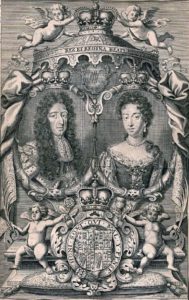
In September 1688, James heard the reports of William of Orange’s imminent arrival. He was accompanied by around 15,000 troops leading James to panic in the face of such a threat to his reign. After marching his troops to Salisbury, James had an aberration; totally unnerved, he left for London and fled to the safety of France allowing his opponents to declare his abdication in his absence.
The path was now clear and in February 1689, William of Orange and James’s daughter Mary were declared joint rulers, as ordained by parliament.
James would make one last-ditch effort to regain his throne in March 1689 at the Battle of the Boyne however despite his French support he lost the battle and lived the rest of his life in exile in France, dying in September 1701.
The tumultuous constitutional crisis which had extended over several generations of monarchy had finally reached its climax. The constitutional monarchy was here to stay!
Jessica Brain is a freelance writer specializing in history. Founded in Kent and a lover of all things historical.

